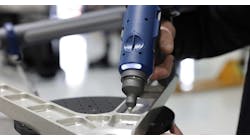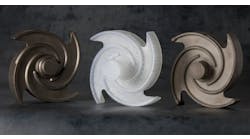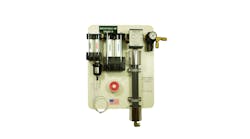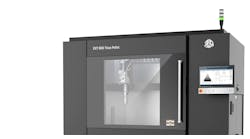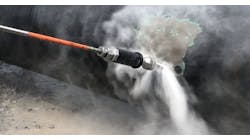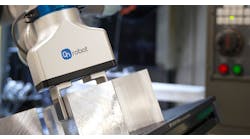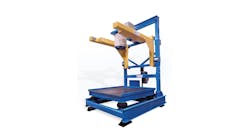Breathable-Air Combo System
Pellet-Extrusion Printer for Prototypes
High-Speed Waterblasting
FM&T's 2024 Guide to Exhibitors
Bulk Bag Fillers
A new high-density media combines the advantages of plastic and ceramic media in one product
WALTHER TROWAL introduced a new plastic media for grinding and surface smoothing of metal workpieces, especially diecastings. The high-density and sharp edges of the embedded abrasive material contribute to a drastic shortening of process times, but they also produce "excellent" surface finishes at a surprisingly low wear rate
The new HDC (High Density Cut) media consists of a plastic carrier filled with zirconium silicate, thus combining the advantages of lightweight plastic media with the extremely high density of the abrasive filler material. The developer noted this combination yields metal removal rates that are comparable to ceramic media with, at the same time, a surprisingly low wear rate and excellent surface finishes.
“Many of our customers would love to work with ceramic media, because their finishing tasks require a high grinding performance,” according to Angelika Helten, who heads the Walther Trowal chemical lab, “but ceramic media tends to chip and frequently wears relatively fast. That is why they are using plastic media, which produces the required finishing results, but at much longer processing times. Our new HDC media combines the advantages of plastic and ceramic and is, therefore, the ideal solution.”
The HDC is equally effective in all types of mass finishing equipment. This applies to high-energy centrifugal disk finishing machines, which generally cause a very high wear rate of ceramic media, as well as to linear continuous feed vibratory systems, which only allow a relatively narrow band of processing times. Especially in these machines the HDC is particularly effective, because it produces significantly better finishing results at the prescribed cycle times.
Because of its relatively high bulk density and the sharp edges of the abrasive material the HDC offers grinding characteristics similar to ceramic media.
Besides the actual material content, the media shape plays a significant role. While ceramic media are only available in relatively few shapes, the HDC can be produced in all the known shapes and sizes for plastic media. Initially, Walther Trowal is offering the HDC as 8-mm (0.3-in.) cones, the smallest size available on the market, and effective for finishing workpieces with many internal corners and passages.
For the daily mass finishing operations the media color is also an advantage: Contrary to the mostly grey ceramic media the HDC with its pink color can be easily recognized in case of media lodging in the workpieces.
The HDC media is filled with zirconium silicate. Besides the fact that the abrasive grains have exceptionally sharp edges, this abrasive has the added advantage that it does not contain any aluminum oxide or silicon dioxide. Therefore, it can be used for workpieces that must not be in contact with these two materials.
Visit www.walther-trowal.de
